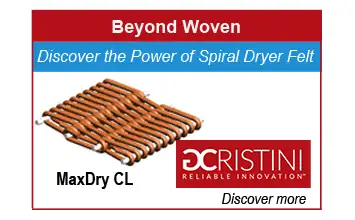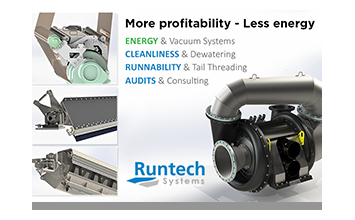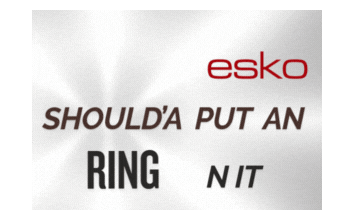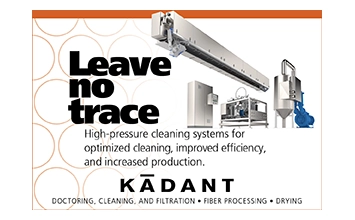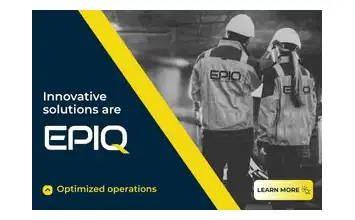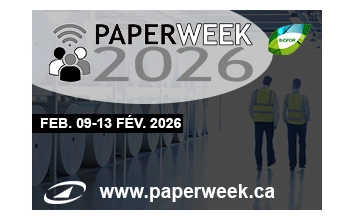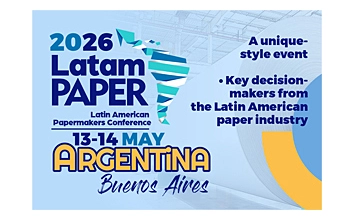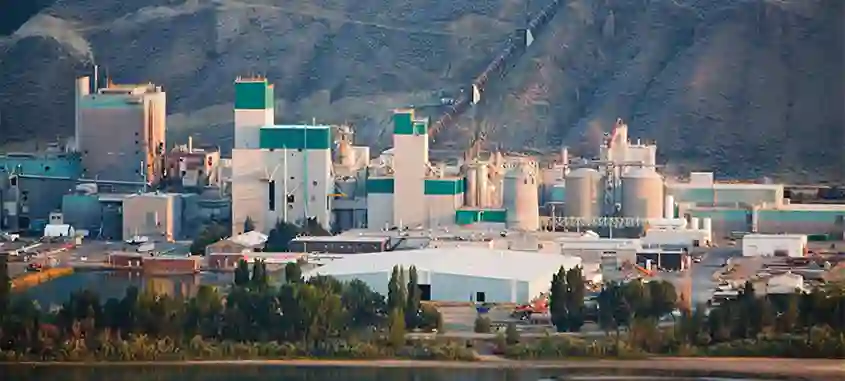At the core of the RunEco Vacuum System, Runtech's EP Series Turbo Blowers have been pivotal in driving energy efficiency in paper mills for two decades. Continual advancements in EP Turbo Blower technology reflect Runtech's dedication to delivering products that are both operationally superior and environmentally beneficial. The year 2025 marks the arrival of groundbreaking new models in the market.
The inclusion of EP Turbo Blowers into Runtech's offerings came with the acquisition of Ecopump Oy in 2008. This strategic move quickly paid dividends, securing a robust position for EP Turbo Blowers in the industry. Today, Runtech stands as a leader committed to relentless innovation and excellence. A milestone was achieved in September when the Kotka factory celebrated the production of the 1000th EP Turbo Blower, underscoring the company's dedication to energy conservation, carbon footprint reduction, and sustainable water management.
Paper producers and nations worldwide are increasingly setting ambitious greenhouse gas (GHG) reduction targets. Runtech's technologies are instrumental in aiding these entities to fulfill their environmental commitments. The company's solutions are aligned with global efforts to transition to a more sustainable industrial future.

Figure 1: Graph showing the development of turbo blower installations. According to the EU Industrial Emissions Directive, the best available technique (BAT) should be used in paper machine vacuum systems. BAT includes features such as no sealing water, automatic speed control, speed-controlled vacuum blowers, and recuperation of the exhaust air heat energy – all features of RunEco Vacuum System with EP Turbo Blowers.
The Best Available Techniques (BAT)
The European Commission's BAT Reference Document for the Production of Pulp, Paper, and Board is a comprehensive guide on the industry's processes and technologies. It covers a breadth of topics, with a focus on dewatering, vacuum systems, and vacuum blowers.
The document outlines the environmental benefits and operational performance of energy-efficient vacuum systems, noting savings of 20 – 45% in electrical power and the elimination of sealing water requirements. These systems are lauded for their automatic speed control, which accommodates shifts in speed, grammage, and felt age. Modern vacuum blowers enhance machine flexibility by enabling adjustments to vacuum levels, thereby optimizing runnability.
The report highlights cross-media effects, such as significant water savings and the capacity to recover a large portion of pumping energy through heat energy recuperation from exhaust air. These systems are adaptable across various plant types and are particularly considered for new installations or during the revamp of existing vacuum systems.
Key demands and best practices include:
- Energy Efficiency: Prioritizing energy-saving dewatering technologies and vacuum systems, coupled with consistent maintenance and refinement.
- Process Optimization: Continual adjustments of vacuum levels to align with process demands, yielding substantial energy conservation.
- Technology Upgrades: Investment in cutting-edge vacuum blowers that enhance energy efficiency and lower operational expenses.
- Integrated Systems: Employing integrated control systems for managing vacuum levels and blower operations to ensure peak performance and energy efficiency.
Regarding environmental considerations:
- Emission Reduction: Efficient systems play a significant role in reducing energy usage, which correlates to lower greenhouse gas emissions.
- Water Management: Improved dewatering techniques promote superior water management and recycling, in line with environmental standards.
In essence, the BREF document underscores the critical nature of refining dewatering and vacuum systems for better energy efficiency, lessened environmental impact, and sustained production quality. Adherence to the best available techniques is crucial for meeting the Industrial Emissions Directive (IED) and propelling sustainable production methods.
RunEco presents a sustainable and environmentally responsible vacuum solution tailored for the paper industry. This system operates without water, enhancing reliability and significantly cutting CO2 emissions. RunEco's approach substitutes traditional vacuum level increases with adjustable-speed turbo blowers, alongside optimized doctoring and save-all systems. Optimal energy savings are achieved by applying vacuum precisely where necessary, facilitated by real-time, accurate water flow measurements. EcoFlow dewatering meters play a critical role in fine-tuning vacuum levels, preventing excessive energy consumption and contributing to overall system efficiency.
Responsive Vacuum Systems for Dynamic Paper Machine Environments
In the papermaking industry, operational variables such as machine speed, basis weight, and the condition of felts are in constant flux. This variability renders a fixed vacuum setting suboptimal across the diverse states of production. New paper machines typically come with vacuum capacities that include broad safety margins, often leading to an excess of unused capacity during standard operation—usually between 40-60% of what was originally specified.
Conventional vacuum technologies fall short in this context, as they lack the flexibility needed to fine-tune vacuum levels, conserve energy, and adjust to the evolving conditions of paper production.
Manufacturers of new paper machines commonly err towards excessive caution, resulting in vacuum specifications that exceed the practical requirements. This conservative approach can saddle end users with inefficient systems that unnecessarily elevate energy costs. Runtech addresses this inefficiency by retrofitting 3- to 4-year-old systems to achieve energy savings upwards of 50% or more than 10 GWh/year. It’s essential, therefore, to clearly define the vacuum system specifications to your machine supplier to avoid the default delivery of cost-driven options that overlook total operational costs over time.
Runtech's dry vacuum systems feature adjustable capacity to match the actual needs of the paper machine. The demand for vacuum can be determined by several factors, including water removal for flatboxes and Uhle boxes, gauged by EcoFlow dewatering measurements, or by the runnability for pick-up rolls and press suction rolls. It’s not uncommon to initially require higher vacuum levels for pick-up rolls, which can then be reduced to achieve energy efficiencies without compromising on performance.
Should there be runnability issues with pick-up felts, operators can promptly increase the vacuum levels. Similarly, press suction rolls often have vacuum levels set at -65 kPa by machine suppliers, when in many instances, -40 to -45 kPa is sufficient, particularly in machines operating at speeds below 1,000 m/min. Correctly adjusting these levels can lead to substantial cost savings.
The capacity to swiftly adapt to changing operational conditions is a hallmark of Runtech’s vacuum systems. For instance, in a press rebuild, the system may be optimized to function efficiently at far lower capacities than the OEM design points, underscoring the value of an adjustable and responsive vacuum system.
Consider a double-width tissue machine with a specified vacuum capacity that accounts for various operational contingencies. In actuality, the needed capacity under stable conditions could be significantly lower, allowing for vacuum level adjustments that optimize performance and energy use.
Integrating EcoFlow dewatering measurements into vacuum system rebuilds extends benefits beyond electricity savings. It also simplifies vacuum control, improves moisture extraction, conserves water, accelerates felt conditioning, reduces felt costs, increases production, and facilitates the recovery of exhaust air heat energy.

Figure 2: Difference between OEM design point and operating point

Figure 3: Flexibility is needed to operate tissue machine efficiently.

Figure 4: The new felt is more open, so the airflows are very close to the machine supplier specifications. Break in period is typically 8 hours to 2 days. In 90 to 95 percent of the felt lifetime, the needed airflow is 40-60% of the specified values.
EP Turbo Blower Innovation
Runtech's pioneering EP technology revolutionizes vacuum systems in paper machines through the use of variable speed turbo blowers, achieving substantial energy cost reductions ranging from 30% to 70% when compared to conventional systems. These turbo blowers operate without water, eliminating the costs associated with water handling and treatment in traditional vacuum systems. The variable speed feature of EP Turbo Blowers offers seamless optimization capabilities, allowing for an effortlessly fine-tuned vacuum system that surpasses the operational efficiency of standard offerings.
Incorporating advanced blowers with integrated high-speed motors governed by frequency converters, EP technology enables meticulous control over the rotational speed and vacuum levels, tailoring them to the nuanced needs of the papermaking process. This precision is especially beneficial in new installations, where the actual vacuum requirements may only be discernible once production commences. EP Turbo Blowers are designed to adapt swiftly, avoiding the inefficiency of throttling and minimizing air losses.
The design of EP Turbo Blowers is characterized by its streamlined efficiency, featuring impellers mounted directly onto the motor shaft. This design choice not only simplifies the system but also enhances its reliability, as it requires just two bearings throughout the entire blower. Moreover, the compact design expedites the installation process, making it a swift and straightforward task. With active magnetic bearing technology, these turbo blowers not only boast increased energy efficiency but also demand less maintenance, further enhancing their appeal and reducing long-term operational costs.
Advancements in Sustainable Papermaking Technologies
Runtech consistently emphasizes enhancing its product line to deliver efficiency, customer satisfaction, and ecological benefits. Recognized as an innovator in the pulp and paper sector, Runtech actively collaborates with clients to deepen the understanding of their operational needs, driving both efficiency and cost-effectiveness. The company has been investigating alternative bearing technologies to expand its range of offerings. Runtech has already implemented active magnetic bearings, celebrated for their frictionless, maintenance-free operation, in the RunEco EP1000 at a paper mill.

RunEco EP Turbo Blower with active magnetic bearings
In response to market needs, Runtech Systems is unveiling two new models of turbo blowers. The RunEco EP350 is tailored for smaller airflows, particularly suitable for vacuum system refurbishments, utilizing reliable standard bearing technology.
The RunEco EP650 AMB is set to incorporate active magnetic bearing technology. Both models come equipped with shroudless impellers, precision-engineered from a single piece of forged unique steel alloy to ensure maximal strength and dimensional stability. The innovative 3D impeller design delivers exceptional efficiency across an extensive operational range. Offering both shrouded and shroudless impellers allows Runtech to fine-tune turbo blower performance to specific customer process requirements.
The precise axial force measurement provided by magnetic bearings has enabled Runtech to refine the impeller design, enhancing process efficiency further. With the integration of active magnetic bearings, the RunEco EP Turbo Blowers boast an impressive wire-to-air efficiency exceeding 60% across a broad operating range, peaking over 70%.
Active magnetic bearings offer a frictionless operation, presenting a low-maintenance alternative for customers. These bearings support the rotor magnetically, eliminating any contact between moving and stationary parts, which also negates the risk of oil leakage and is highly resistant to impeller build-up due to the completely oil-free operation.
Ville Lahdensuo, R&D Director at Runtech Systems, asserts, “Active magnetic bearing technology is a significant advancement toward more sustainable papermaking, offering remarkably low total cost of ownership. The compact size and material efficiency of EP Turbo Blower technology, coupled with reduced energy consumption throughout its lifespan, make it an unparalleled solution.”
Runtech has forged a partnership with SpinDrive, a specialist in customizing systems to meet unique demands. This collaboration has led to the provision of a controller that fits the specific bearing design and support throughout the commissioning process.
Alexander Smirnov, CTO and co-founder of SpinDrive, explains, “We began by evaluating the customer's energy efficiency, testing the impeller at various operational points. The active magnetic bearing system, paired with the Magma controller, enabled effective testing and data collection for impeller redesign. Consequently, the updated impeller has improved system efficiency and confirmed robust performance throughout the turbo blower's entire operating range.”
The optimization of vacuum systems goes hand in hand with comprehensive service agreements, ensuring that these systems continue to provide substantial energy savings and adapt automatically to machine needs. While RunEco EP Turbo Blowers are cost-effective to maintain and operate, scheduled maintenance is recommended to guarantee uninterrupted operation and longevity. Routine audits and optimization checks are vital to ascertain that the vacuum system functions at peak performance.
Given the high degree of airflow and potential contaminants in the process, vacuum systems operate under demanding conditions. Particular care is needed, especially where the mill water circuits are fully closed, to prevent the accumulation of contaminants. Cleanliness is crucial for optimal performance and runnability, not only for the vacuum system but across the entire papermaking process.
Streamlined Maintenance with RunCare Agreements
Runtech offers RunCare Agreements, comprehensive service contracts that simplify maintenance, manage costs, and boost vacuum system efficiency. These customized agreements, which include an extended warranty and span 5–10 years, ensure that vacuum systems operate optimally with minimal effort required from mill staff.
RunCare provides scheduled maintenance aligned with production plans, fixed service costs, and around-the-clock assistance. The service extends to in-depth inspections of all vacuum system components, aiding in precise budgeting for potential part replacements.
Already favored by 30% of Runtech's clientele, the RunCare concept is gaining traction due to its focus on addressing customer challenges effectively. Routine services and audits by Runtech's experts are critical for the smooth operation of paper mills, offering insights into potential improvements and the overall health of the equipment. These evaluations are integral to enhancing energy efficiency, reducing emissions, and optimizing production, starting with a thorough understanding of the papermaking process and its nuances.
Read more about Runtech’s solutions www.runtechsystems.com






